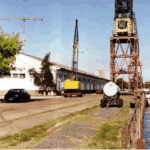Corrientes
Quick Info
Km 1208 Paraná River
Province of Corrientes Argentine
Charts CR#1, sheet 60
Charts CR#1, sheet 60
Specialities and port connections
This city, the province capital, has a population of approximately 360.000 (including suburban areas) and is the seat of the provincial government. It is an important commercial and service center and is the head of a rich area which produces citrus, tobacco, foodstuffs, textiles and timber. There are highways connecting the city with the interior of Mesopotamia, the south of Paraguay and with the state of Rio Grande do Sul (Brazil). Towards the west the General Belgrano bridge over the Paraná river connects Corrientes with the city of Resistencia, the Chaco region and the Argentine north-west. Also, the Mesopot‡mico railway connects it with the south of the province of Entre Ríos, Buenos Aires.



